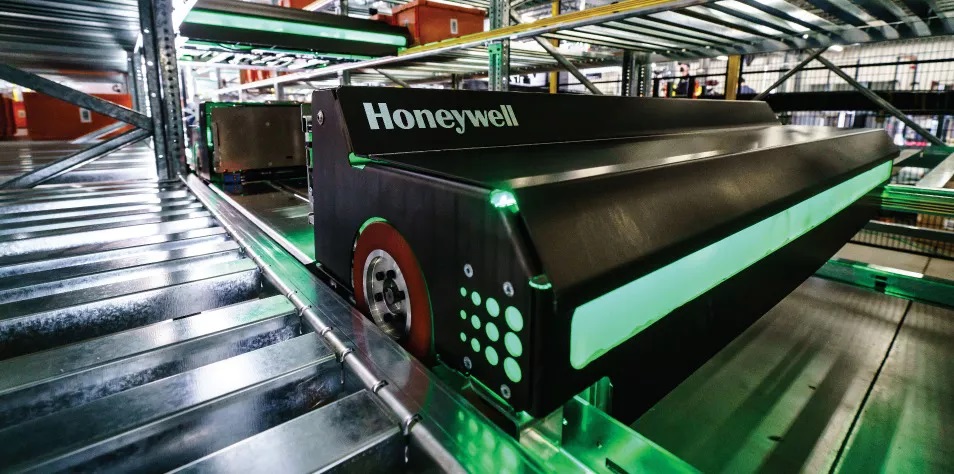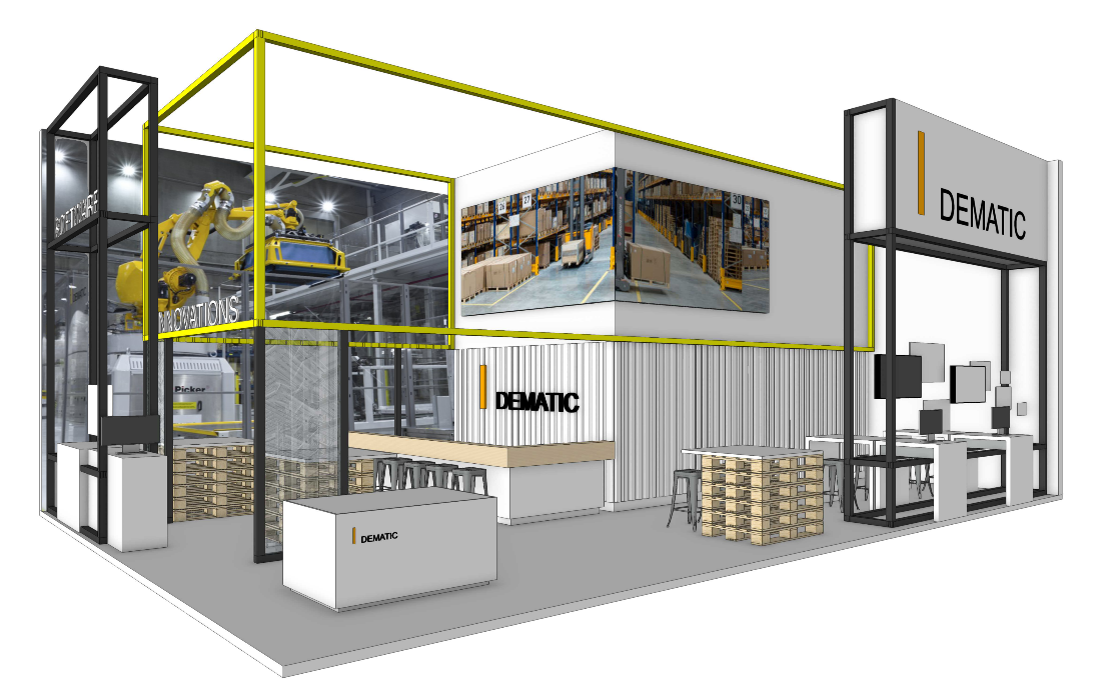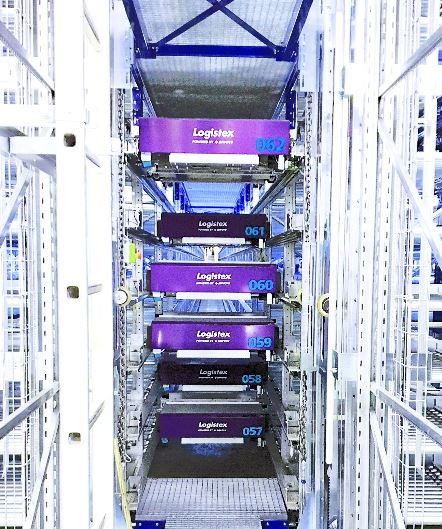Warehouse and distribution centres (DCs) are grappling with a significant and ongoing labour shortage. Increased wages and benefits haven’t been enough to reverse the trend. Ever-increasing demand for faster delivery, and ongoing macro supply chain disruption add to the challenge. Warehouse safety issues also remain a problem for recruitment and retention of workers.
“Amidst a ‘perfect storm’ type of environment, warehouse and DC operators are aggressively seeking ways to digitise operations, add automation technology and integrate those technologies with software systems,” said Keith Fisher, president, Honeywell Intelligrated. “The goal is to increase efficiency, reduce the human labour requirement and create safer, more productive workplaces. As a result, we’re seeing some developing trends heading into the second half of the year.”
Specifically, Honeywell sees six trends emerging in the warehouse and DC industries.
Increasingly aggressive adoption of proven automation technologies
Moving into the second half of 2022, we’re seeing heightened interest in long-proven warehouse automation systems that pick, pack, sort and carry packages throughout the facility. There is also increasing investigation into how to integrate this automation into warehouse software systems, such as warehouse management and warehouse control systems (WCS), to extract more value from automation.
Regardless of the labour shortage or where companies currently sit on the automation spectrum, SKU proliferation, widely varying order profiles and seasonal demands are making some degree of automation a necessity. For many operations, order picking or putting are the entry point to digitalisation and automation. For those further down the path, integrating these technologies into operations means trained coordination between workers, automated systems and software to drive high-speed, high-volume warehouse execution.
Newer forms of automation are being evaluated and adopted with increased urgency
There are also signals that newer forms of automation, such as robotic palletising/depalletising and Autonomous Mobile Robots (AMRs), are beginning a path toward significant adoption. For example, a recent Interact Analysis report showed the mobile robot market is expected to grow from $3.6bn in 2021 to $18bn in 2025. Honeywell is seeing surging interest as the industry begins to prioritise investment designed to increase efficiency and productivity along with employee safety and overall satisfaction by integrating automation.
AMRs provide significant productivity benefits by, for example, automating the movement of carts used to transport picked orders or returns. Instead of spending more than half the day walking, workers can park carts in pickup locations and call robots to retrieve them. Additionally, robotic palletisers and depalletisers limit the need for heavy and/or awkward lifting by humans. While these and other advanced forms of automation handle the repetitive, difficult and often time-consuming tasks, scarce labour resources can be shifted to higher-value jobs and, in-turn, increase employee satisfaction.
Persistent labour shortage, new technical skills gap becomes problematic, training required
The number of warehouses globally is forecast to rise from nearly 150,600 in 2020 to 180,000 by 2025, according to Interact Analysis. Without more automation, an additional 3.5 million warehouse workers need to be added to cover current needs and that expansion. However, a willing workforce is proving very difficult to find and competition for these resources is high.
As a result, warehouse and DC operators will look to expand automation, but this creates another fast-developing issue. Technical skills are needed to plan for, utilise, maintain and optimise warehouse automation, and they’re in short supply. Operators will aggressively look to outsource automation-related training – to train up a new army of technically skilled workers and realise far faster benefits from automation.
This promises to make warehouse jobs more attractive intellectually and drive higher compensation, thus making the overall market more compelling for job seekers and those seeking upskilled career transitions.
The use of digital twins will accelerate to help automated warehouse planning
Digital twins deliver virtual representations of a physical environment – proving extremely helpful in the warehouse industry. With a digital twin, new automation technology can be tested virtually, without downtime or rearrangement of physical assets. Automation efforts can be tested, and impact can be reviewed.
By using digital twins and synthetic data modelling, warehouse operators can close the loop between planning, training and implementation on the floor. With this technology, what used to equate to months of automation implementation can now be accomplished in days. In short, warehouse performance can be improved far more quickly and cost-effectively than in the past.
Human health and safety will begin to take root as a business case for automation in the new, pristine warehouse environment
Regardless of whether there are health and safety issues at a particular warehouse, the overall industry suffers from a health and safety image problem. It’s well documented that concerns in these areas are either keeping workers away from the industry entirely or causing problems with existing employee satisfaction.
Automation can help. Repetitive movement-related injuries and those due to heavy and/or awkward lifting, as well as worker fatigue, can be greatly mitigated by robotics and automation. Increased use of these technologies can lead to far fewer work-related injuries, keep workers on the job and earning for their families, and mitigate insurance premiums and worker’s compensation claims for the employer. By prioritising happier, healthier workforces, we should see an uptick in retention and warehouse job appeal.
Accelerated dark warehouse research & development, forward-looking companies begin path
Dark warehouses promise to be nearly fully automated and autonomous, operating virtually free from human intervention – aside from planning, maintenance and ongoing optimisation. They will operate 24/7/365 in no light (thus, the term dark warehouse) and in extremely cold or warm conditions, thus saving energy and related costs. They promise to help solve the labour shortage and drive incredible efficiency. However, full concepts are still at least two years away and live implementations are at least three years away. Breakthrough technologies in robotics, sensing and control, and IT are still needed. But demand is so strong that it’s beginning to drive more aggressive R&D investment to achieve these breakthroughs faster.
Meanwhile, forward-looking warehouse operators are starting the journey to dark warehouse by not only putting automation piece parts in place as described above, but also tying technologies together via software, such as Warehouse Execution Systems, allowing all the technologies to communicate.
As promising as it is, the brave new world of dark warehouses will also contribute to the developing technical skills gap referenced above. Operators will need to plan for that as well as determine what types of warehouses and industries are most appropriate for the early days of dark warehouses.
“These trends showcase a collective theme: automation is increasingly paving the way for better safety, productivity and workforce retention in the warehouse industry,” said Fisher. “From what we see, the number of operators currently using automation technology and aggressively moving to expand it looks to be growing rapidly heading into the second half of 2022. These are smart investments to help weather the current labour crisis – and help minimise the need for future capital expenditures.”











